Updated November 8, 2022. Here is a list of public buildings in Lisbon, Portugal that were constructed prior to 1800 that still stand today. These are among the oldest public buildings in Lisbon.
Five were erected before Columbus discovered America.
Eighteen were built before the signing of the Declaration of Independence.
The oldest building in Lisbon – Castelo de São Jorge 1050
Archaeologists suggest that Barbarian tribes occupied the hilltop as early as 600 -800 BC.
The hilltop has been held by the Phoenicians, the Carthaginians, and the Romans.
The castle that you see today was built by the Moors circa 1050.
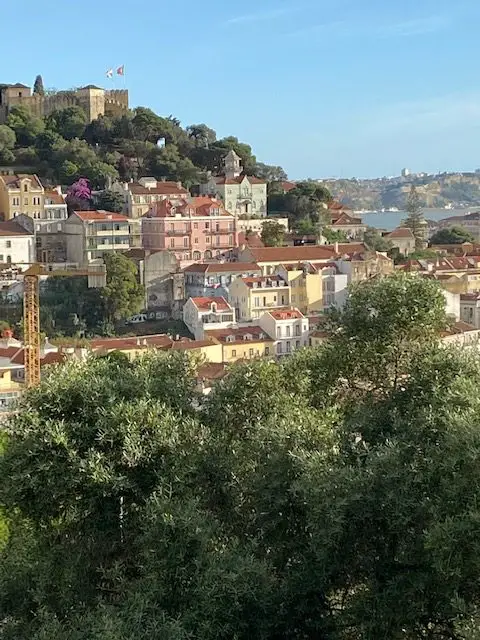
The castle was expanded and became the home of Portuguese royalty after Afonso Henriques seized Lisbon from the Moors in 1147.
I’ve wondered why the castle is named after St. George. He wasn’t Portuguese. Nor is he the patron saint of Lisbon.
St. Vincent is the patron saint of Lisbon, and Dom Afonso Henriques vowed to bring the saint’s remains back to Lisbon after he successfully reconquered the city for the Christians.
Vincent was declared the patron saint. of Lisbon in 1173.
Lisbon’s favorite saint is actually St. Anthony, who was born in Lisbon in 1195.
He was canonized in 1232 as St. Anthony of Padua, but he is actually a favorite local son.
His feast day is widely celebrated in Lisbon on June 12.
When Afonso Henriques retook the castle from the Moors, he had the assistance of an army of English knights.
King João (who married the English princess, Philippa of Lancaster) dedicated the castle to England’s St. George.
São Jorge offers some of the best views of Lisbon.
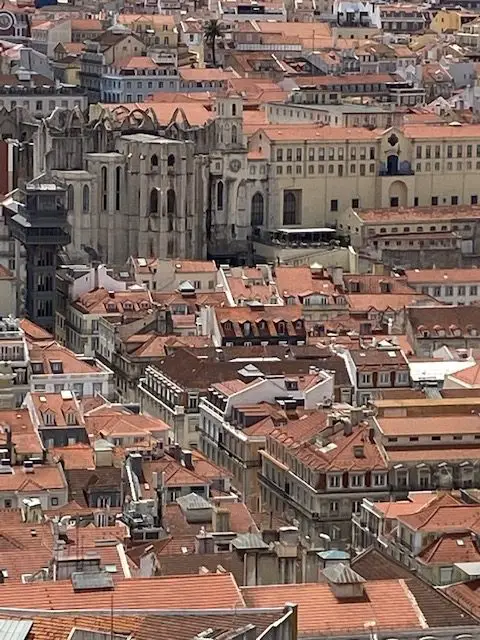
The castle is open seven days a week.
Admission is 10 euros for adults, ages 13 – 25 pay 5 euros, seniors and disabled pay 8.5 euros, Children under 12 and under are free.
Guided tour available for an additional 2.50 euros.
Bus 737 stops in front of the Castle door. Catch bus 737 at Praça da Figueira. To learn more, see my article, In and around Castelo de São Jorge – Lisbon’s castle
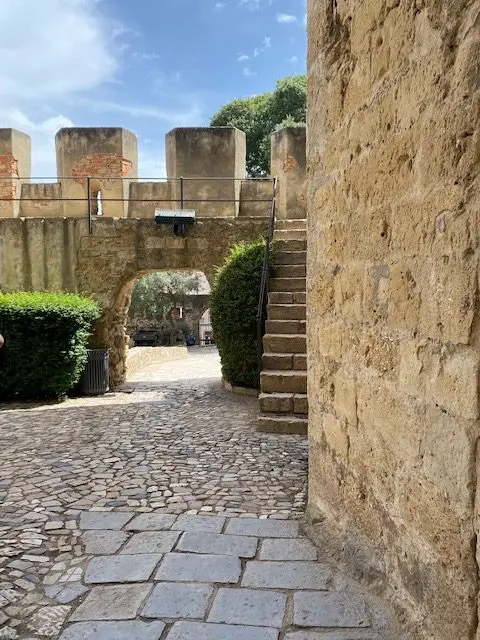
Sé de Lisboa 1147
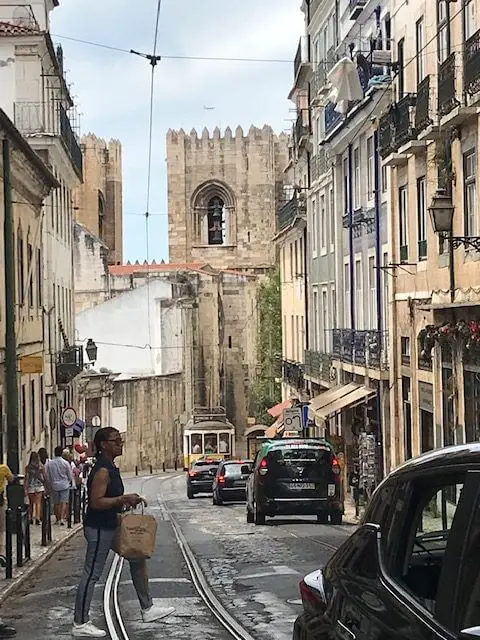
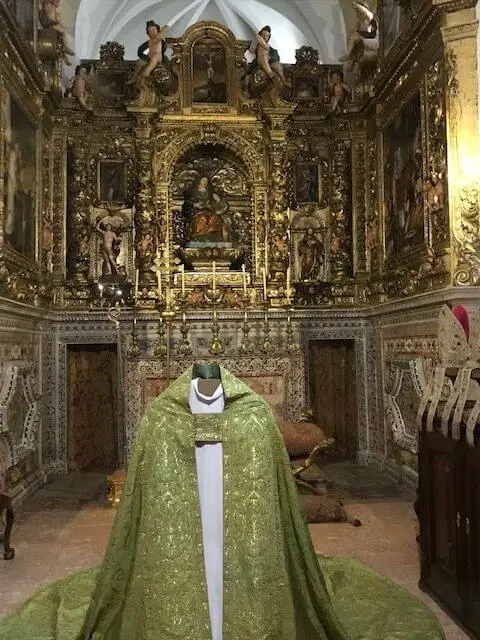
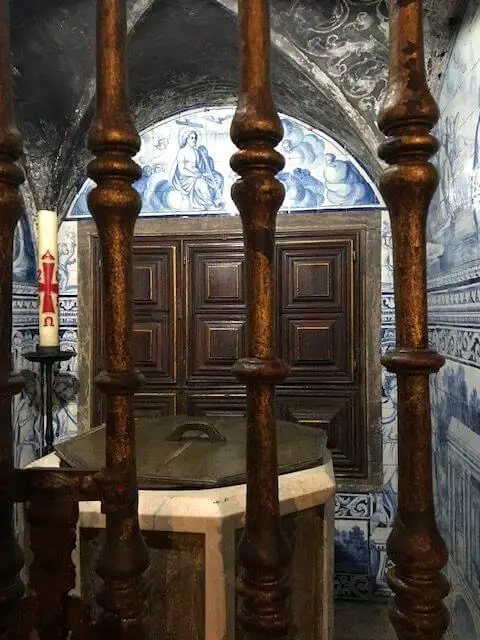
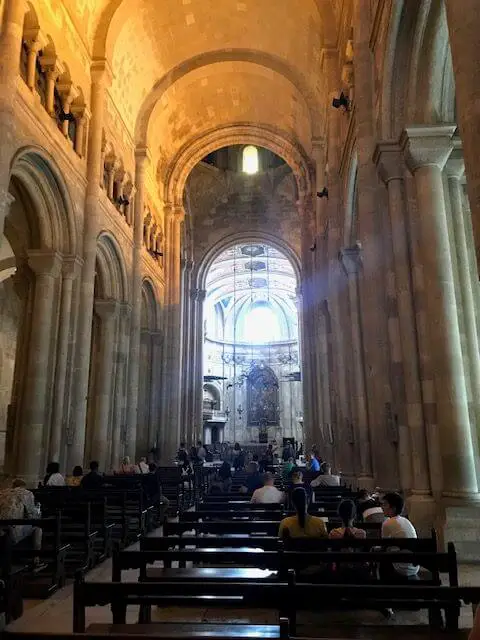
Saint Mary Major, Lisbon Cathedral, “The Fortress of God,” is a symbol of the reconquest of Lisbon from the Muslem Moors.
This first church in Lisbon was built on the site of a mosque in order to send a message.
The stark church actually resembles a fortress. It has been remodeled several times, and is an interesting mix of Romanesque, Gothic, and Baroque architecture.
Saint Anthony was baptized in this church, and the Sé Cathedral also includes relics of the saint.
You will also see windows that show various archaeological digs under the church which reveal Roman, Moorish, and Visigoth artifacts.
The Sé Cathedral has seen a lot of history. Some of it, sad. To learn more, read my article, Lisbon Cathedral | All you need to know before you go
In 1383, Bishop Martinho Anes was believed to be a traitor, and he was thrown off of the north tower of the church. They thought he was working for Spain.
Also, it is somewhat ironic that there was a political prison almost across the street from the cathedral.
The Cadeia do Aljube (Aljube Jail) began holding prisoners in 1860, and tortured and executed prisoners under the Salazar dictatorship until the mid 20th century.
Today the building houses the Museum of the Resistance and Liberty. https://www.museudoaljube.pt/en/
In order to get to the cathedral, walk uphill for five to ten minutes from Praça Martim Moniz, or hop on Tram 12 or Tram 28. Long waits for the trams.
Mosteiro de São Vicente de Fora 1147 – 1649
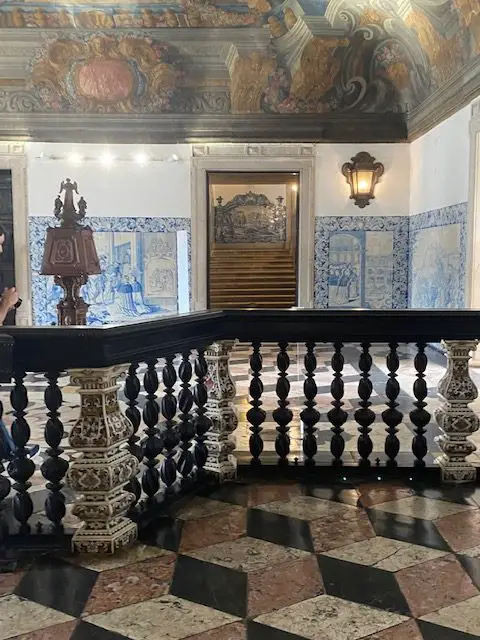
This mannerist-style church is called “de Fora” because the church was “outside of the castle walls.
Construction of São Vicente de Fora started in 1147, but was not completed until 1649.
St Vincent’s roof and main dome later collapsed in the 1755 earthquake.
Inside you will find exceptional 18th-century tile, including the famous panels illustrating scenes from LaFontaine’s fables.
More than 100,000 tiles were used in the upstairs floor. As a result, the church has the largest collection of azulejo tiles in the world.
Be sure to visit the sacristy with its marble walls, and the Braganza Pantheon downstairs.
The church houses the bodies of the House of Braganza kings from 1640-1910.
Also, make sure to investigate the rooftop terrace with its great views of Alfama.
Take Tram 28 and get off at Largo de São Vicente.
Admission to the church is free. For more information, Visit São Vicente de Fora in Lisbon: Everything you need to know
Igreja de São Domingos 1241 -1748
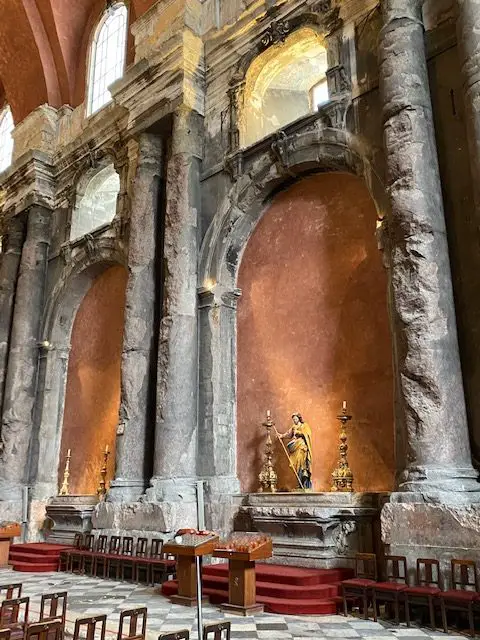
The church of São Domingos (Saint Dominic) has a history that matches its somber interior.
The church suffered through the earthquake of 1531, again the big disaster in 1755, and then was devastated by fire in 1959.
Much of the cosmetic damage caused by the fire is still evident today.
In the Largo de São Domingos, the plaza in front of the church, is a plaque honoring the Jews who were massacred in 1506 after choosing not to convert to Christianity.
The massacre was organized in the church.
The church also played a role in the later Portuguese Inquisition as well.
São Domingos is the parish chosen my many African immigrants, as it often had an African priest who was able to help them settle in the city when they arrived from the colonies.
Even today, Largo de São Domingos is a popular gathering spot for many in the African community.
The church is just north of Rossio Square.
Convento do Carmo 1389 – 1423
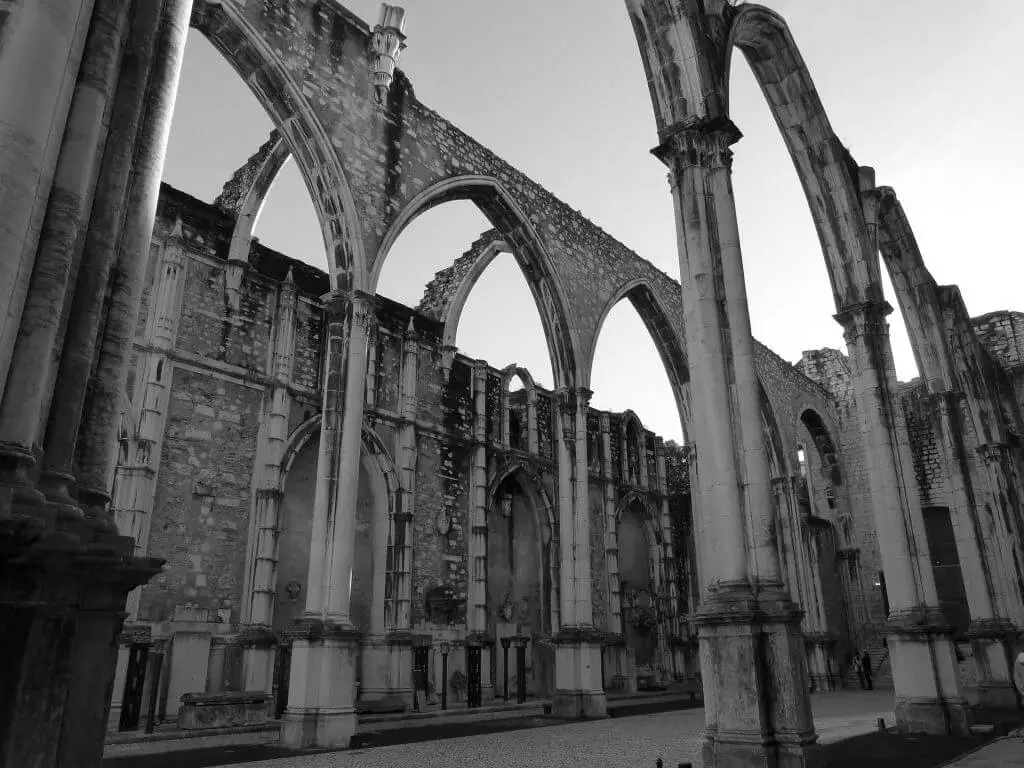
Construction on this church went from 1389 until 1423.
On Saturday, November 1, 1755, around 9:45 am, the church was filled for Mass, and the Great Lisbon Earthquake struck, killing all inside the church.
The strongest earthquake ever to hit Europe, scientists agree that it would have measured at least 8.4 on the Richter scale.
It is said that tea cups shook as far away as Ireland.
It killed between 30,000 and 50,000 people in Lisbon.
Following the earthquake of 1755, the man in charge of rebuilding Lisbon, the Marquês de Pombal, decided that the Convento do Carmo’s gothic arches should not be rebuilt, that they should be a reminder of what had happened.
And that is how the church has remained for close to three centuries.
The Convent is a beautiful and humbling site to see, and should not be missed. Lisbon’s Convento do Carmo Ruins | Everything You Need to Know
Admission is 5 euros.
The plaza in front of the convent has a quiosque and is a great place for a snack or a drink.
In order to get from the Baixa (downtown) to the convent, you could take the Elevador de Santa Justa for 5 euros, or you could use the free public elevator one block west.
Mosteiro dos Jerónimos 1501
Construction on the Jerónimos Monastery began in 1501. UNESCO named it a World Heritage Site in 1983.
This 300-yard-long building was built using Portugal’s riches from the spice trade.
Built on the site where Vasco da Gama prayed before his first voyage, the monastery was the home of the order of Saint Jerome (the Jerónimos).
These are the same monks that prayed for the explorers and the king, and invented the pastries known as pastéis de Belém.
Vasco da Gama and national poet, Luís de Camões, are now buried on the site.
Take the train from Cais de Sodré headed toward Cascais. Get off at Belém. Also tram 15 from Praça da Figueira. You can also take buses 714, 727, and 728.
It is free to get into the church, but for the rest of the monastery, admission is 10 euros. Don’t miss any of it! The entire site is extraordinary.
A combined ticket with the national archaeology museum is 12 euros.
Across from the monastery, you will find the Monument to the Discoveries, which was built in 1958.
Further down the street you will find a second UNESCO World Heritage site, the Belém tower.
Learn more about the Belém neighborhood in my Lisbon’s historic Belém neighborhood | Everything you need to know




Igreja de São Roque 1506 -1619
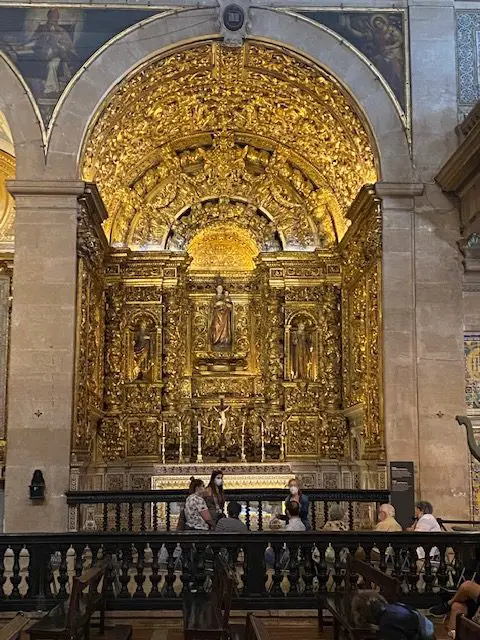
Located in Bairro Alto, the Church of Saint Roch has a relatively plain exterior, but an absolutely stunning interior.
It was built while the plague was grinding its way through Lisbon.
Originally the area was a tomb for plague victims, and the church was dedicated to St. Roch, who looked after the sick.
Eventually, the church came to be operated by the Jesuits, and it was the first Jesuit church in Portugal.
The side chapel of St John the Baptist was built in Rome and re-assembled here. It is reportedly one of the most expensive chapels ever built.
At Praça dos Restauradores on Avenida Liberdade, get the Elevador da Glória up the hill to Bairro Alto. Exiting the funicular, take a left and you will find São Roque down the road a few blocks at Largo Trindade Coelho.
While you are here though, you might turn to the right for the São Pedro de Alcântâra scenic viewpoint, and the Convento de São Pedro de Alcântara – which is also on this list of historical sites.
As an added bonus, there are several restaurants (past the viewpoint) that have exceptional views of the city. For more on the Church of São Roque – São Roque Church in Lisbon – What to know before visiting
Convento de Madre de Deus / Museu Nacional do Azulejo 1509
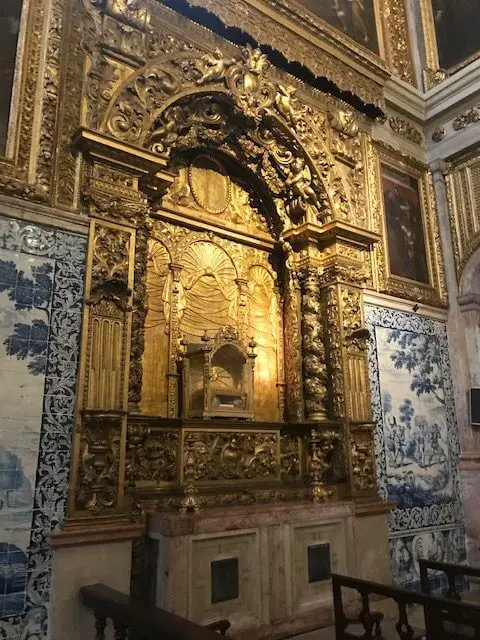
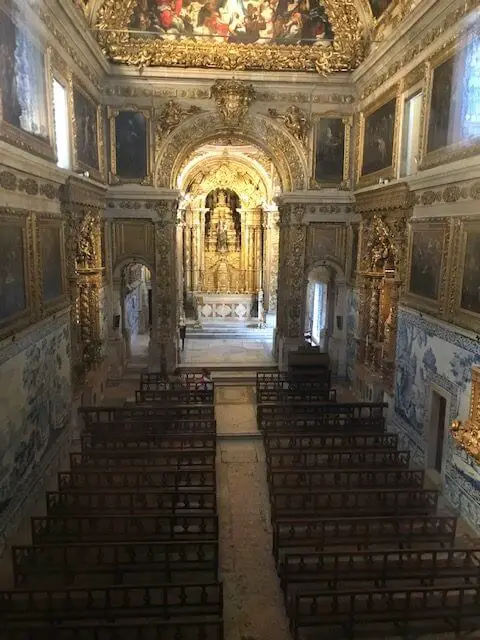
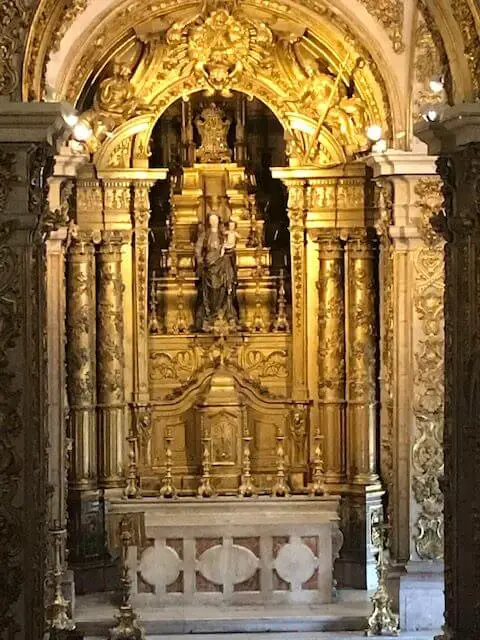
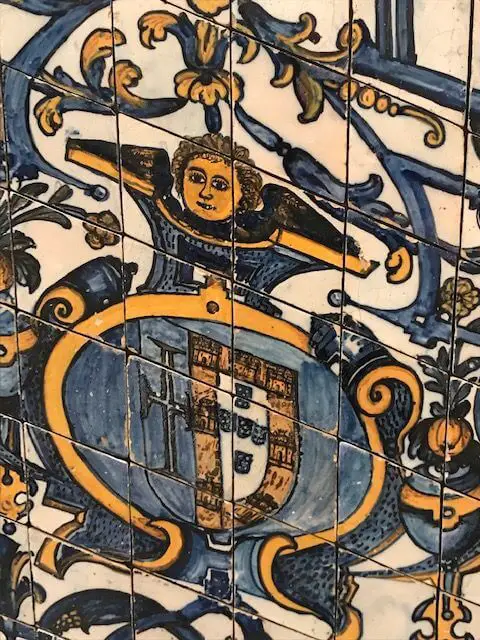
Admission to the National Tile Museum is only 5 euros, and I highly recommend this national monument. http://www.museudoazulejo.gov.pt/
The museum covers the process of making tiles and tile panels by hand, and has examples of all different periods of azulejo art from the 15th century until now.
You also get to tour the stunning baroque Igreja de Madre de Deus, with its beautiful gilded and carved Brazilwood, its paintings and tilework.
The museum is located at Rua Madre de Deus 4. Buses 718, 742, and 794 stop in front of the museum.
Torre de Belém 1514
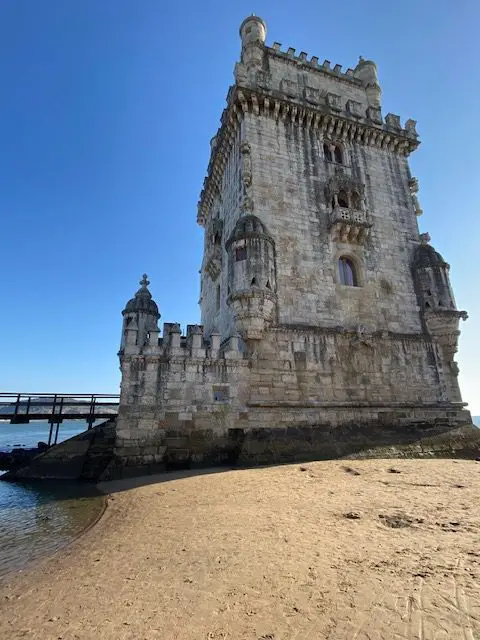
Now a symbol of Lisbon and a UNESCO World Heritage site, the Tower of Belém has been protecting Lisbon harbor since 1519.
Construction started in 1514. Originally, it was known as the tower of Saint Vincent.
It was the last thing Portuguese sailors saw as they left on their explorations, and the first thing that they saw upon return.
The four storey tower is 98.4 feet tall.
In order to reach the tower, take the train to Belém station. You can also take tram 15, or bus 714727, 728, 729, 751, 113, 144.
Prior to covid, visitors were allowed to enter the tower, climb the stairs, and spend a few minutes on the roof. Lines were always very long.
Casa dos Bicos 1522
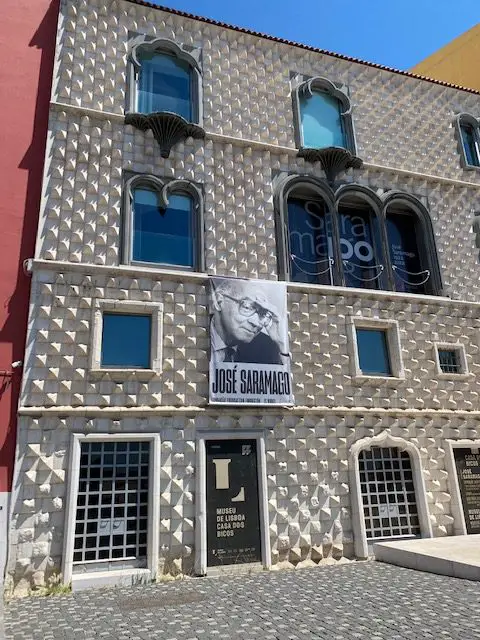
Located at Rua das Bacalhoeiros 10, a few minutes walk from Praça do Comércio.
This historic townhouse was built in 1523.
It is one of a few buildings which survived the earthquake, and the city purchased the building in 1960.
It was restored in 1980 and now belongs to the Lisbon Museum and houses the José Saramago Foundation. Portugal’s Nobel Prize-winning author is buried outside under an olive tree.
It is called house “of bicos” (beaks) because of the diamond shaped stones on the façade,
Convento de Nossa Senhora de Jesus 1595 -1696
Severely damaged in 1755 and remodeled afterward, this building now houses the Lisbon Academy of Sciences and Geological Museum.
Palácio de São Bento 1598
Built in 1598 as a Benedictine monastery, Saint Benedict Palace has been the seat of the Portuguese Parliament since 1834.
It was in 1834 that all of the religious orders in Portugal were disbanded.
The Benedictine monks were evicted from the building, and the Portuguese government took over the site.
Portugal’s Prime Minister also lives on the grounds of the São Bento Palace in the smaller São Bento Mansion.
Since the Carnation Revolution in 1974 when Portugal became a democracy, the plaza in front of this building has been a popular spot for citizens’ demonstrations.
Saint Benedict’s palace is built in the neoclassical style.
You are welcome to enter the Palácio de São Bento when the parliament is meeting. Their meetings are open to the public.
The palace is located on Rua São Bento. It is a few minutes from the Rato metro station.
Or you can walk downhill from the Praça das Flores in Príncipe Real.
Two more sites from this list are nearby. The Church of Jesus and the Basílica de Estrela.
Igreja de Jesus 1615
Construction began on this church in 1615.
Near the Palácio de São Bento, you will find the Church of Jesus, also know as Nossa Senhora de Mercês .
This church houses one of the masterpieces of baroque tile art, a work by Antonio De Oliveira Bernardes.
His tiled, vaulted ceiling was created 1714.
Unfortunately, this piece is in the section of the building that is normally closed to the public.
The Church of Jesus was where the Marquês de Pombal attended church, and he was buried here until his remains were moved to another church.
Admission to the Church of Jesus Is free. Take tram 28 to the Calçada de Combro stop.
Convento de São Pedro de Alcântara 1680
General António Luís de Meneses promised God that he would build a church and dedicate it to Saint Peter of Alcântara if the Portuguese were blessed with a victory over the Spaniards in the Battle of Montes Claros.
So today, at the corner of Rua São Pedro de Alcântara and Rua Luisa Todi, you can find the Convento de São Pedro de Alcântara and it’s small, quiet, unassuming baroque church with its beautiful gilded and tiled interior.
Admission is free, and it is well worth a visit.
The nearest metro stations are Rossio and Restauradores.
From there, take the Elevador da Glória up the steep hill.
At the top, turn right. You will easily see the Miradouro de São Pedro de Alcântara, scenic viewpoint.
After taking in the view, turn around, and you will be facing the convent.
The Igreja de São Roque is down the street to your right as you leave the convent.
Palácio Bemposta 1693
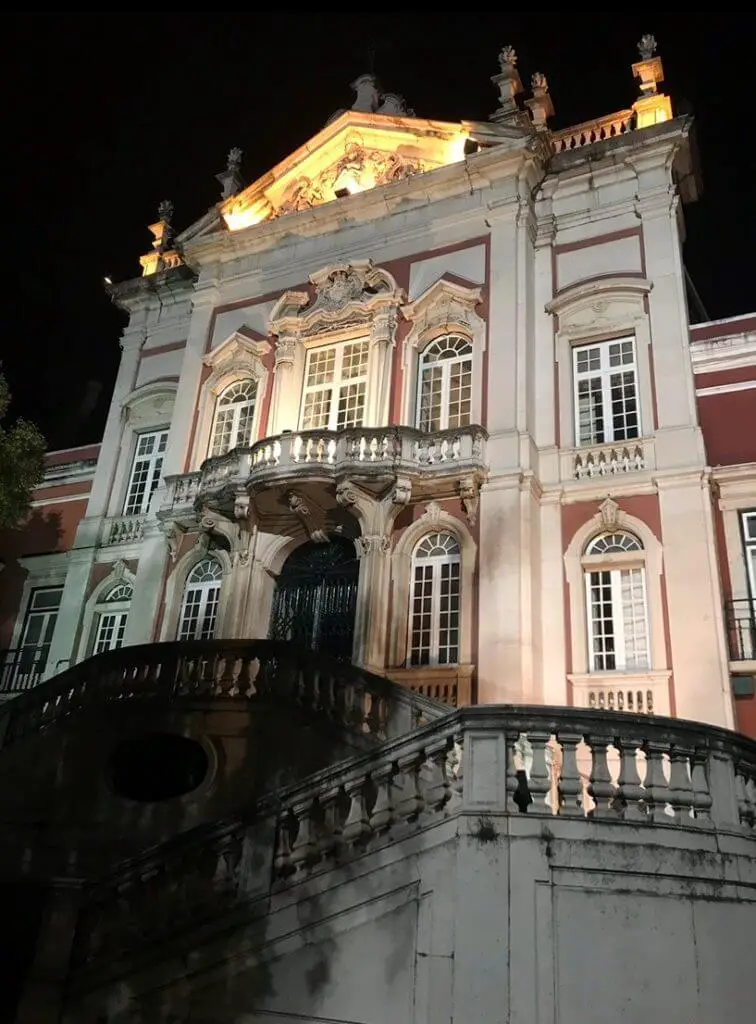
Paço da Rainha 30. Take bus 723 or 730 to Campo Martires Patria. Or take the green metro on to the Intendentes metro station and walk uphill a few blocks to the west
Built in 1693, it is also known as the Queen’s Palace (Paço da Rainha), because it was built for queen Catherine of Braganza when she returned from England.
She lived there for many years.
Following this, it would become the residence of King John VI and eventually the Portuguese Military Academy.
This building is also an example of neoclassical architecture.
Igreja de Sant Antão 1730 -1767
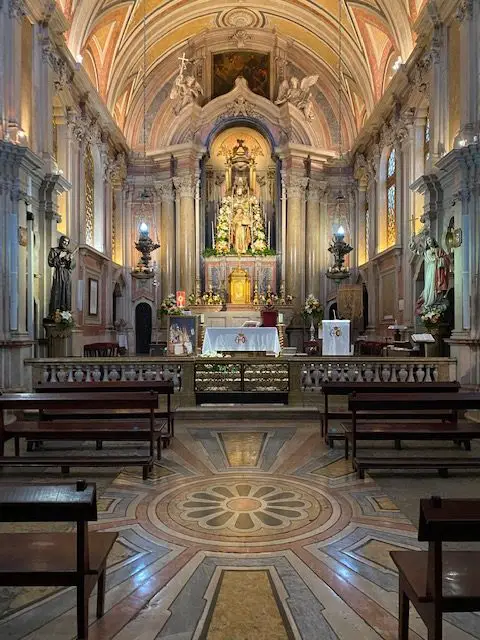
Largo de Santo Antonio da Sé 1100.
This is the church that was built on the site where Saint Anthony was born in 1195.
Saint Anthony’s real name was Fernando De Bulhões.
Born into a rich family he eventually gave up his wealth and joined the Order of Franciscans and chose to live a life of poverty.
He moved to Italy and did missionary work in Padua (which is why he is called Saint Anthony of Padua).
He was canonized just one year after he died.
The church is a national monument.
Ground was broken on the church in 1730.
The church was almost totally destroyed in 1755. All that remained was the main altar.
The church that you see today was built in 1767.
When Pope John Paul II came to Portugal in 1982 he prayed in the crypt of Saint Anthony. You are also able to visit the tomb as well.
Pope John Paul II also blessed the statue of Saint Anthony in front of the church.
An interesting Lisbon custom is to toss a coin onto the book held by Saint Anthony. This will supposedly guarantee you a new boyfriend or girlfriend.
Aqueduto das Águas Livres 1744
The current Gothic structure was built in the path of the old Roman aqueduct.
The 18-mile Gothic Style aqueduct is part of a 36-mile network that carried drinking water into Lisbon’s water fountains from 1748 until 1960.
The aqueduct survived the earthquake.
You can actually walk on top of the aqueduct. This is not a good idea if you are afraid of heights.
In order to get to the walkable section of the aqueduct, take bus 702 from Praça Marquês de Pombal in the direction of Serafina.
Tell the driver do you want to get off at the aqueduct. The stop is called Calçada dos Mestres.
You can also visit the Museum of Water (Rua Alviela 12) and observe the mechanisms that pump water into the million-gallon tank that served the city.
It is called the Reservoir Mãe das Águas (the Mother of the Waters Reservoir). Admission is free on the first weekend of the month.
Arco da Rua Augusta 1755 -1873

If you start at Rossio metro station and walk south towards the river, you will easily find the arch on Rua Augusta.
Or you could exit the metro at Terreiro do Paço station,
The arch has fantastic views of downtown Lisbon and the Tejo River.
The entrance to the arch is at Rua Augusta 2.
Construction on the arch started in 1755 and completed in 1873. At first, the arch was designed to be a bell tower but the design was changed over time.
The sculptures on top of the arch are 23 feet tall. For more information – What is the story behind Lisbon’s Rua Augusta Arch?
Basílica da Estrela 1779
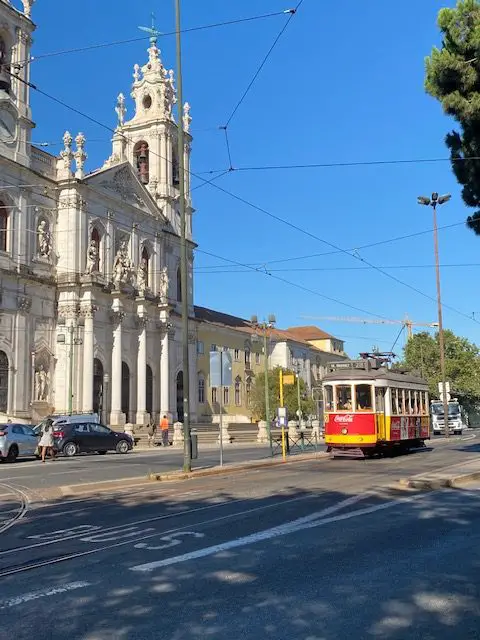
Queen Maria I vowed to build this church after the birth of her son.
The neoclassical church is known for its huge rococo dome and twin bell towers. You can go inside the dome and onto the roof for great views of the city.
The church also has a 500 piece Christmas nativity scene. In order to get to the church take tram 25 from Plaza do you commercial or take tram 28. Both stop in front of the church.
Ajuda Palace 1795 – the last royal residence
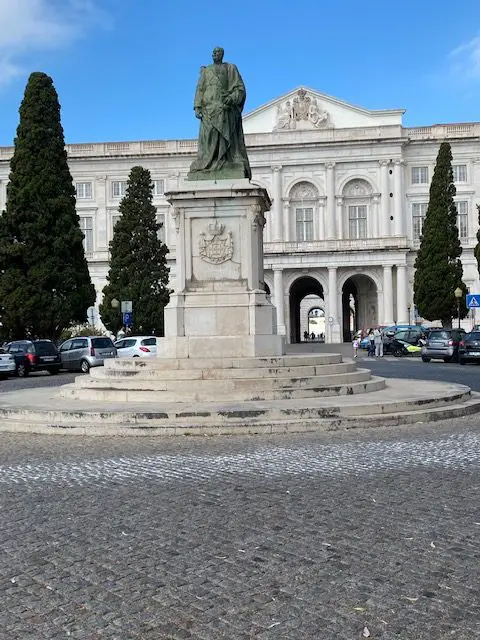
Built on the site of a temporary wooden structure to house the Royal Family after the 1755 earthquake. Modern neoclassical style.
Construction stopped or slowed several times, For example when the royal court fled into Brazil, when Napoleon invaded Portugal, and when the Republican Revolution in 1910 overthrew what would be the last king of Portugal.
To learn more, see my Ajuda National Palace: A quick guide
Thanks for reading about the oldest buildings you can still see in Lisbon.
There are plenty of public buildings still standing in Lisbon that were built prior to 1800. I have probably left some off of this list.
Also, the Pestana Palace Hotel was built in 1533 and was once the home of the Count of Ericeira, but now is a luxury hotel.
There are surely countless merchants in the Baixa Pombalina operating in 18th-century buildings, as well as private homes in Alfama. But their privacy should be respected.
Speaking of respect, many of the buildings on this list are churches, and you are welcome to enter. But you must be respectful of services or people who are praying in silence, and you will be expected to dress modestly. No shorts!
I am not associated with any businesses mentioned in this article.
If you are looking for other things to do while you are in Lisbon, you might want to read my article Unique tours and experiences in and near Lisbon – Lisbon travel ideas . Or, maybe you are ready to hit the beach. How to use public transportation to get to Lisbon’s beaches – Lisbon travel ideas